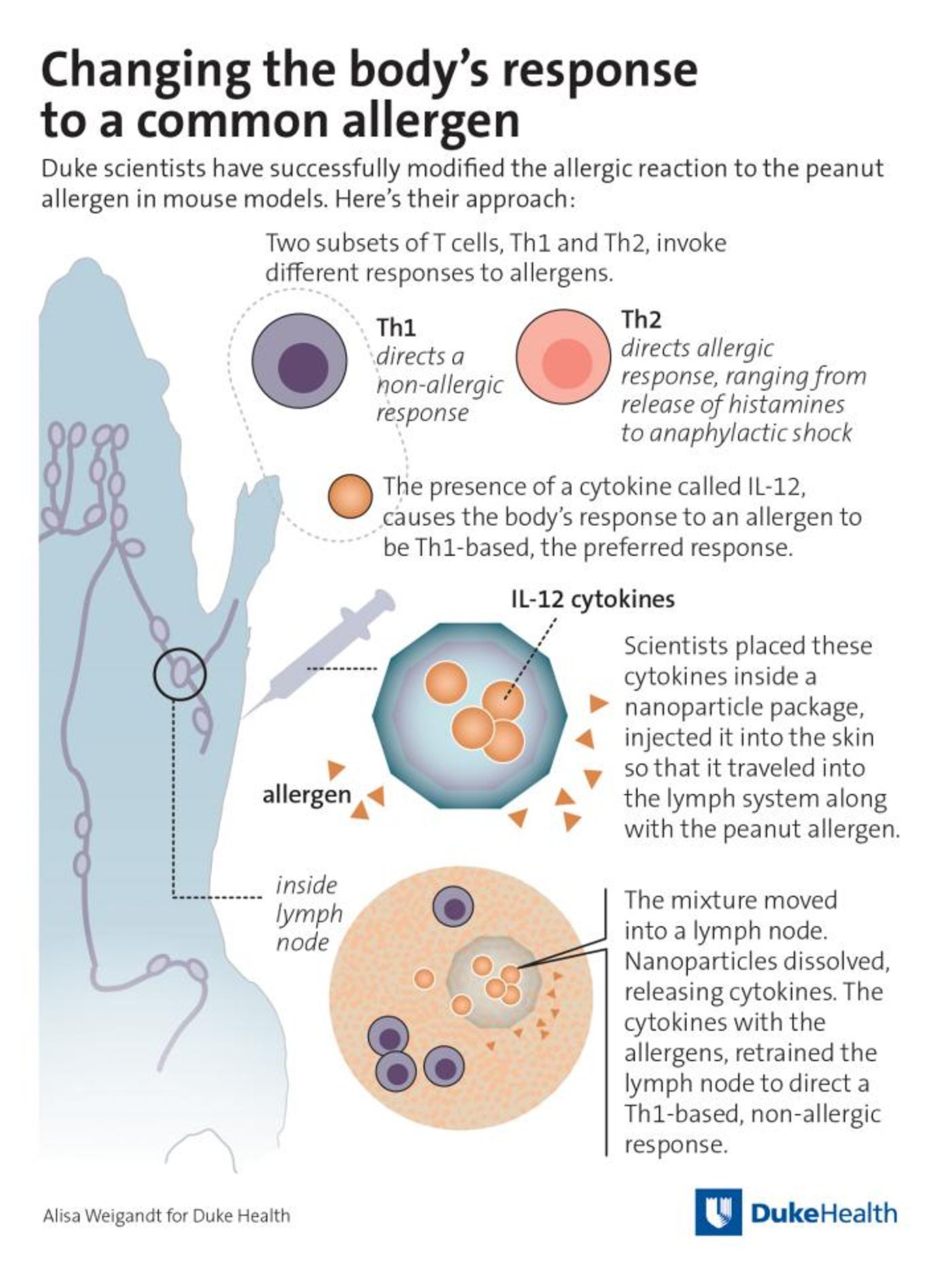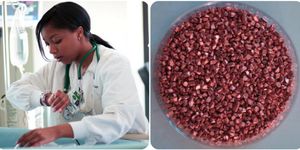Teaching the Immune System to Ignore Food Allergens
An allergic reaction of any kind is a result of the immune system responding to an otherwise harmless allergen as if it were a pathogen. However, sending the right messages to the immune system can change the way it operates, as Duke University scientists found in their new study aimed at reducing the severity of food allergies.
In the past, allergy research focused on gradually exposing allergens, like the proteins in peanuts, to people with certain allergies. In theory, slowly exposing a person allergic to peanuts to the allergen would desensitize that person’s allergy. Although sometimes effective, this process was risky and took a long time. Exposing peanut proteins to a person with a peanut allergy, even in small doses, could trigger a dangerous immune reaction.
Instead, Duke scientists developed a new approach based on the foundation of the average allergic reaction: an imbalance of vital communication between chemical messengers called cytokines. To retrain the immune system to tolerate allergens, researchers would need to improve cytokine communication.
They zeroed in on a type of cytokine called Th2, identified as a major culprit behind allergic immune responses to allergens. When Th2 is acting normally, it works with another cytokine called Th1, but when Th2 is acting abnormally, as in an allergic reaction, levels of Th2 skyrocket and levels of Th1 drop to nearly nothing. The solution? Restore levels of Th1 cytokines.
In their study, they used a mice model of peanut allergy, one of the most common types of food allergy. Researchers developed a novel system for reprogramming immune systems, a type of nanoparticle delivery that could send Th1 cytokines through the skin to the lymph nodes. The lymph nodes are essentially a breeding ground for many types of immune cells.
The manual addition of Th1 cytokines successfully reduced the allergic response to peanuts. Additionally, the protective effect appeared to be long-lasting. If this result holds true later in clinical trials, this would mean that patients could potentially receive one Th1 treatment and be done.
"The Th1 and Th2 sides of immunity balance each other," explained lead author Ashley St. John, PhD. "We reasoned that since we know Th2 immunity is over-produced during allergic responses, why not try to skew the immune response back the other direction? By delivering cytokines to the lymph nodes where immune responses are established, we were able to re-educate the immune system that an allergic response is not an appropriate one."
While the studying of the new nanoparticle delivery approach to treating peanut allergies is still in its infancy, in the future it could also potentially be applied to other allergens, like dust and pollen.
The present study was published in the Journal of Allergy and Clinical Immunology.
Sources: Duke University Medical Center, Live Science










